Was the 2021‑22 Rise in Inflation Equitable?
Ruchi Avtar, Rajashri Chakrabarti, and Maxim Pinkovskiy
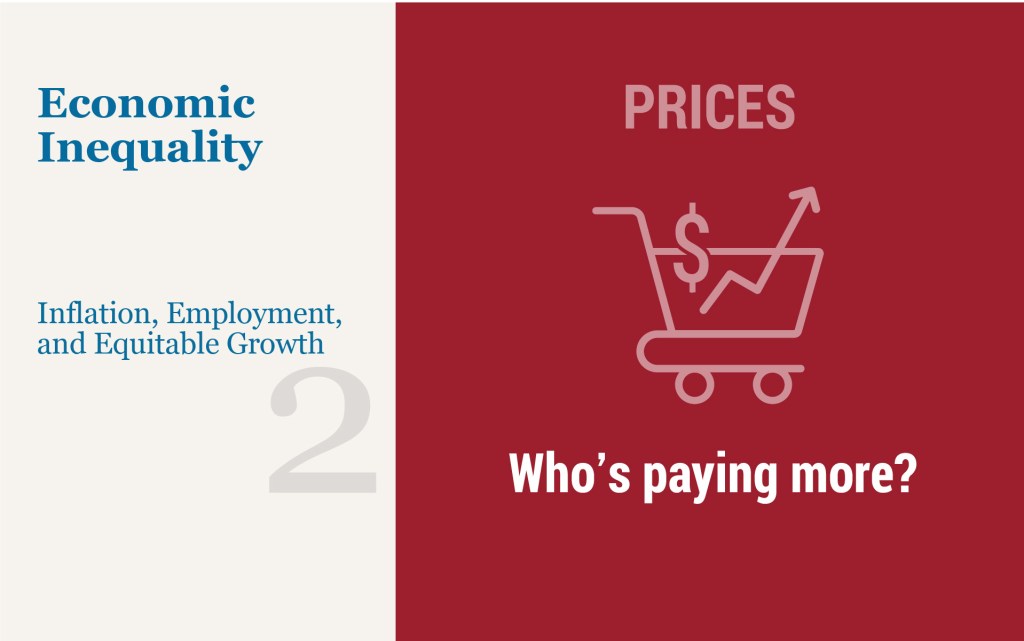
In our previous post, we discussed how the labor market recovery—the “maximum employment” half of the Federal Reserve System’s dual mandate—featured not only a return of overall employment rates to pre-pandemic levels, but also a narrowing of racial and ethnic gaps in employment rates. In this post, we take up the second half of the dual mandate—price stability—and discuss heterogeneity in inflation rates faced by different demographic groups during the rise in inflation in
2021-22. We find that, in contrast to inequalities in employment rates, disparities in inflation rates have widened during the recent inflationary episode, with Black and Hispanic Americans experiencing more inflation.
How Equitable Has the COVID Labor Market Recovery Been?
Ruchi Avtar, Rajashri Chakrabarti, and Maxim Pinkovskiy
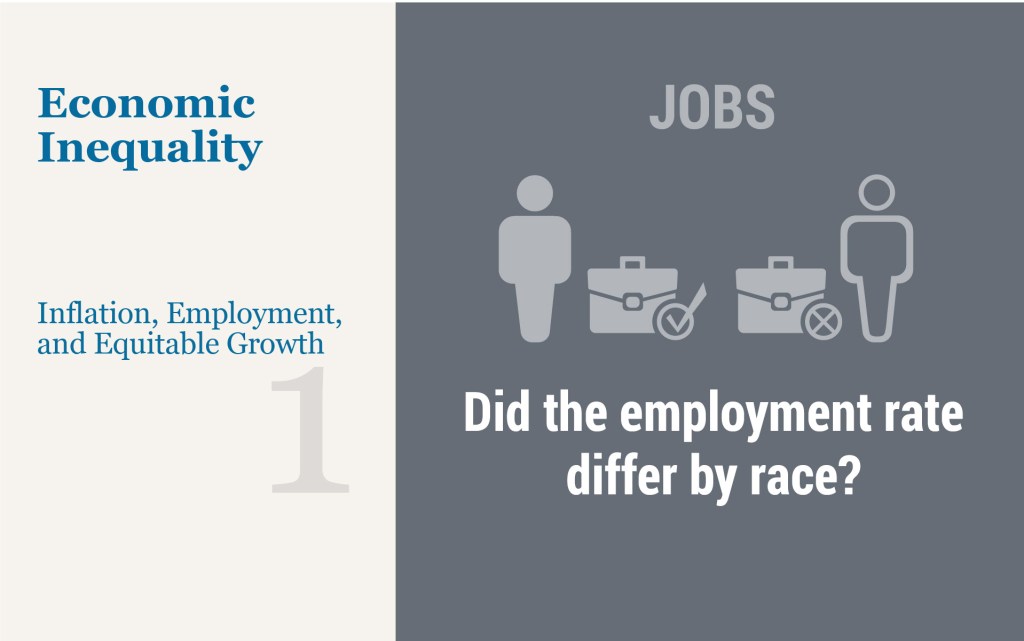
One of the two monetary policy goals of the Federal Reserve System— one-half of our dual mandate—is to aim for “maximum employment.” However, labor market outcomes are not monolithic, and different demographic and economic groups experience different labor market outcomes. In this post, we analyze heterogeneity in employment rates by race and ethnicity, focusing on the COVID-19 recession of March-April 2020 and its aftermath. We find that the demographic employment gaps temporarily increased during the onset of the pandemic but narrowed back by spring 2022 to close to where they were in 2019. In the second post of this series, we will focus on heterogeneity in inflation rates, the second part of our dual mandate.
COVID‑19 and Small Businesses: Uneven Patterns by Race and Income
Ruchi Avtar, Rajashri Chakrabarti, Davide Melcangi, Maxim Pinkovskiy, and Giorgio Topa
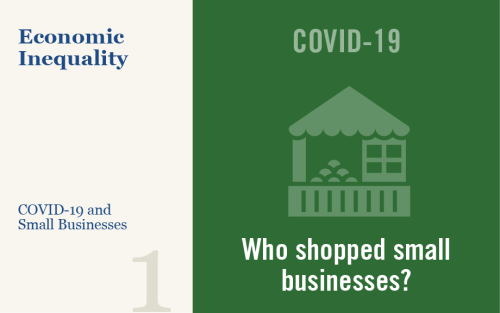
The COVID-19 pandemic resulted in one of the sharpest recessions and recoveries in U.S. history. As the virus spread over the country in a matter of weeks in March 2020, most states rapidly locked down nonessential economic activity, which plummeted as a result. As the first wave of COVID-19 subsided and people gradually learned to “live with the virus,” states reversed most of the initial lockdowns and economic activity rebounded. In our ongoing Economic Inequality series, we have explored many aspects of how the economic turmoil associated with COVID-19 differentially affected households. Here, we turn to small business experience. The first post in this three-part installment seeks to understand if there was variance in small business activity across counties that differed by income and race. In two companion posts, we investigate the experience of small businesses in terms of credit access, looking at characteristics of who received and who benefited from the Paycheck Protection Program (PPP). The analysis finds inequalities in PPP credit access as well as differences in the loan and recipient county characteristics for those who received loans through financial technology (fintech) providers versus other lenders.
Racial and Income Gaps in Consumer Spending following COVID‑19
Ruchi Avtar, Rajashri Chakrabarti, Maxim Pinkovskiy, and Giorgio Topa
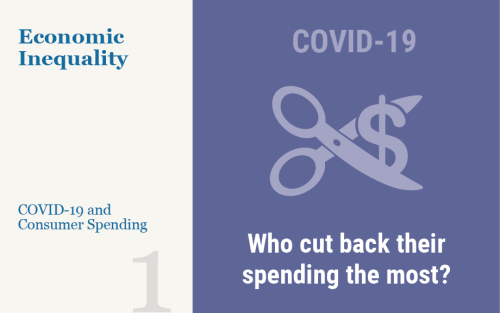
This post is the first in a two-part series that seeks to understand whether consumer spending patterns during the COVID-19 pandemic evolved differentially across counties by race and income. As the pandemic hit and social distancing restrictions were put into place in March 2020, consumer spending plummeted. Subsequently, as social distancing restrictions began to be relaxed later in spring 2020, consumer spending started to rebound. We find that higher-income counties had a considerably steeper decline and a shallower recovery than low-income counties did. The differences by race were also sizeable as the pandemic struck but became considerably more muted after summer of 2020. The decline and the recovery until the end of summer were sharper for majority-minority (MM) than majority nonminority (MNM) counties, while both sets of counties showed similar growth in spending after that. The second post in this series highlights the goods and services that were most adversely affected (or “constrained”) by the pandemic. Then, differentiating households by income, that post explores which households were more exposed to these pandemic-constrained expenditure categories.
Understanding the Racial and Income Gap in COVID‑19: Essential Workers
Ruchi Avtar, Rajashri Chakrabarti, and Maxim Pinkovskiy
This is the fourth and final post in this series aimed at understanding the gap in COVID-19 intensity by race and by income. The previous three posts focused on the role of mediating variables—such as uninsurance rates, comorbidities, and health resource in the first post; public transportation, and home crowding in the second; and social distancing, pollution, and age composition in the third—in explaining the racial and income gap in the incidence of COVID-19. In this post, we now investigate the role of employment in essential services in explaining this gap.
Understanding the Racial and Income Gap in COVID‑19: Social Distancing, Pollution, and Demographics
How Has China’s Economy Performed under the COVID‑19 Shock?
Investigating the Effect of Health Insurance in the COVID‑19 Pandemic
Rajashri Chakrabarti, Maxim Pinkovskiy, Will Nober, and Lindsay Meyerson

Does health insurance improve health? This question, while apparently a tautology, has been the subject of considerable economic debate. In light of the COVID-19 pandemic, it has acquired a greater urgency as the lack of universal health insurance has been cited as a cause of the profound racial gap in coronavirus cases, and as a cause of U.S. difficulties in managing the pandemic more generally. However, estimating the effect of health insurance is difficult because it is (generally) not assigned at random. In this post, we approach this question in a novel way by exploiting a natural experiment—the adoption of the Affordable Care Act (ACA) Medicaid expansion by some states but not others—to tease out the causal effect of a type of health insurance on COVID-19 intensity.
How Did State Reopenings Affect Small Businesses?
Rajashri Chakrabarti, Sebastian Heise, Davide Melcangi, Maxim Pinkovskiy, and Giorgio Topa

In our previous post, we looked at the effects that the reopening of state economies across the United States has had on consumer spending. We found a significant effect of reopening, especially regarding spending in restaurants and bars as well as in the healthcare sector. In this companion post, we focus specifically on small businesses, using two different sources of high-frequency data, and we employ a methodology similar to that of our previous post to study the effects of reopening on small business activity along various dimensions. Our results indicate that, much like for consumer spending, reopenings had positive and significant effects in the short term on small business revenues, the number of active merchants, and the number of employees working in small businesses. It is important to stress that we are not expressing any views in this post on the normative question of whether, when, or how states should loosen or tighten restrictions aimed at controlling the COVID-19 pandemic.
Did State Reopenings Increase Consumer Spending?
Rajashri Chakrabarti, Sebastian Heise, Davide Melcangi, Maxim Pinkovskiy, and Giorgio Topa

The spread of COVID-19 in the United States has had a profound impact on economic activity. Beginning in March, most states imposed severe restrictions on households and businesses to slow the spread of the virus. This was followed by a gradual loosening of restrictions (“reopening”) starting in April. As the virus has re-emerged over the last few weeks, a number of states have taken steps to reverse the reopening of their economies. For example, Texas and Florida closed bars again in June, and Arizona additionally paused operations of gyms and movie theatres. Taken together, these measures raise the question of how closures and reopenings affect consumer spending. In this post, we investigate how much consumer spending increased after the reopenings. It is important to stress that we are not expressing any views on the normative question of whether, when, or how states should loosen or tighten restrictions aimed at controlling the COVID-19 pandemic.











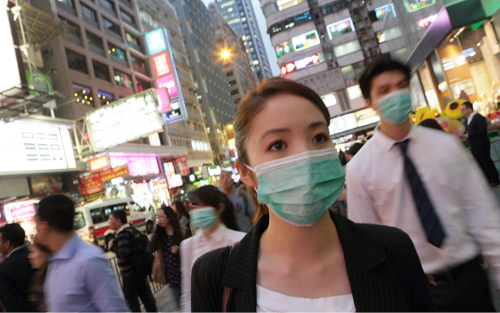
 RSS Feed
RSS Feed Follow Liberty Street Economics
Follow Liberty Street Economics